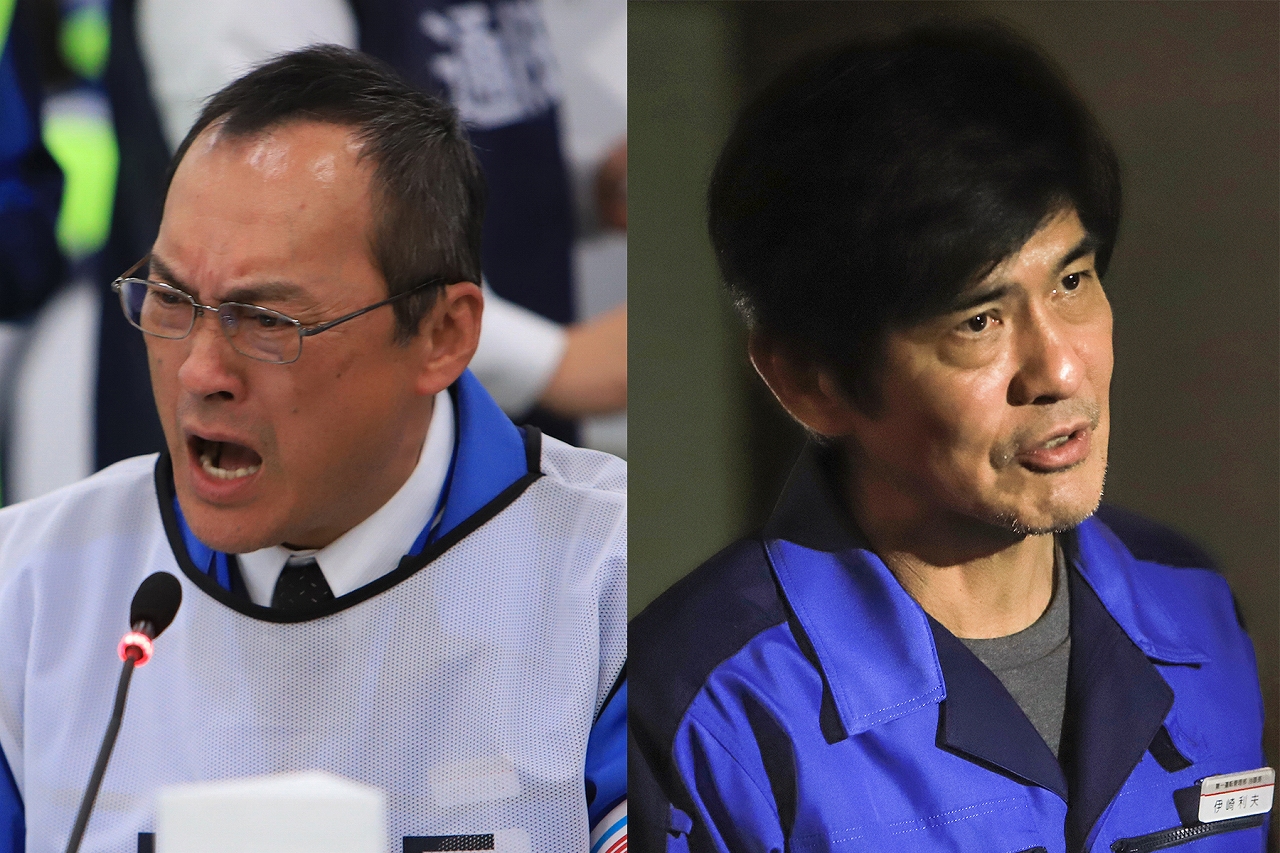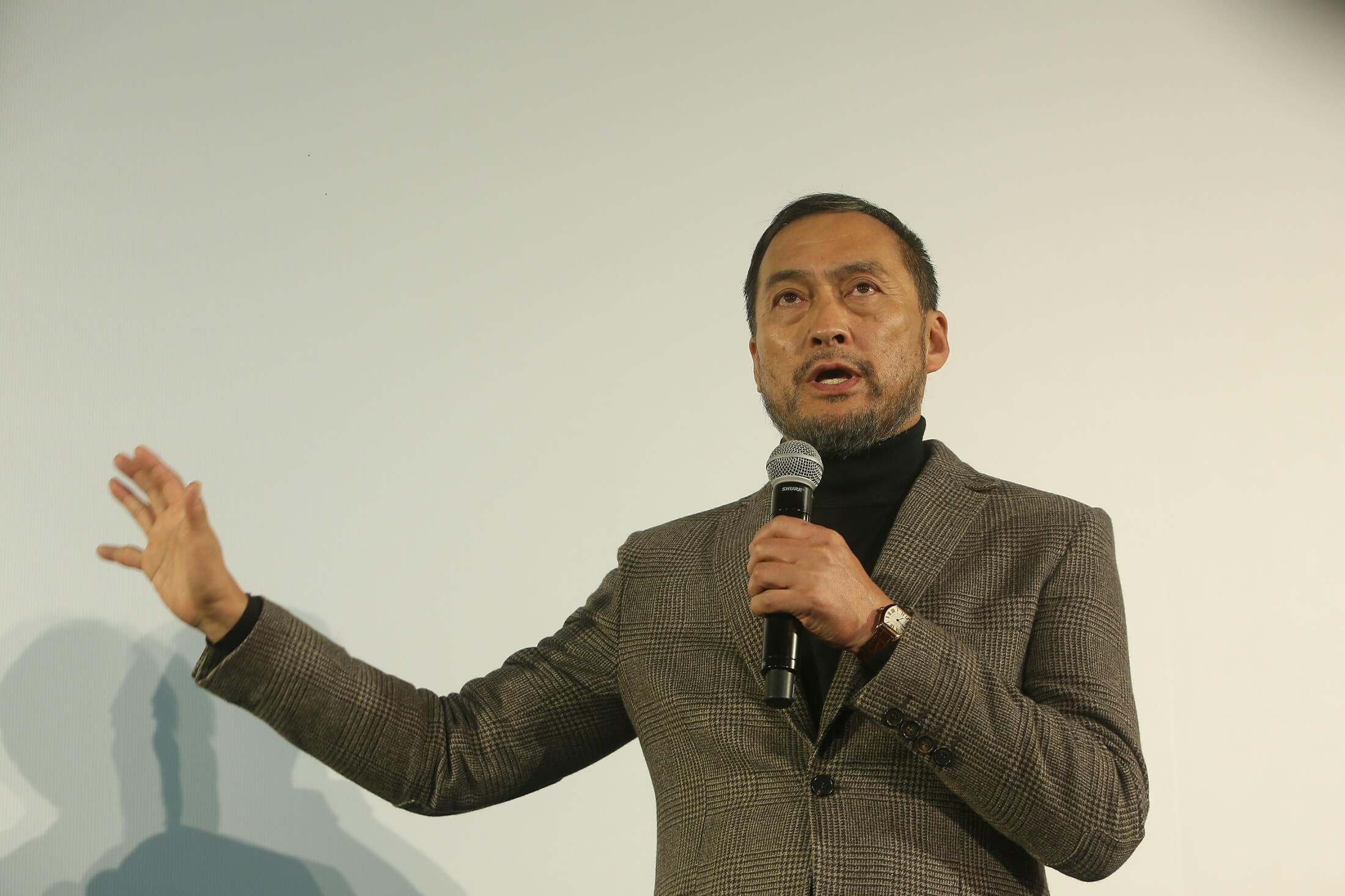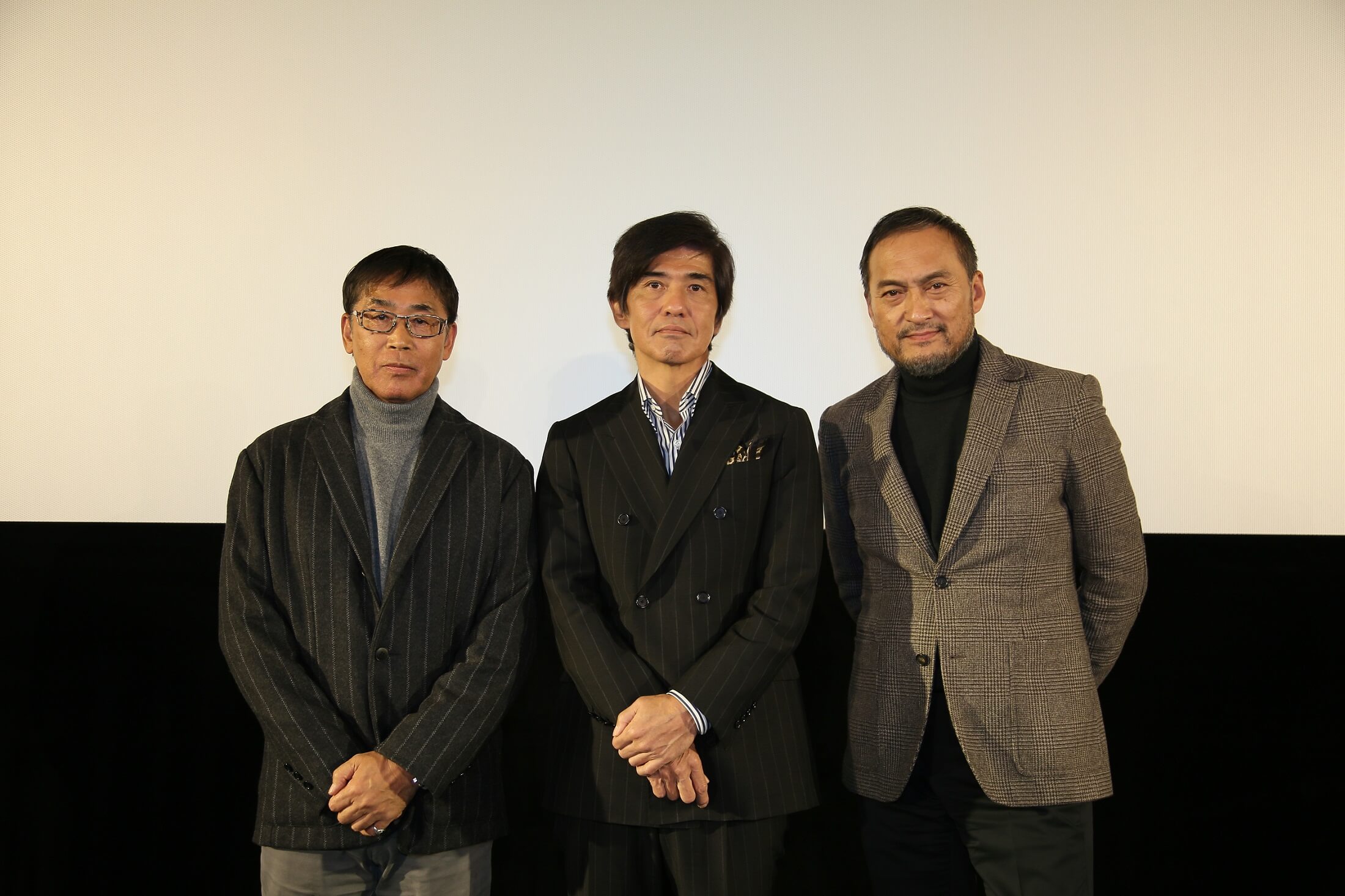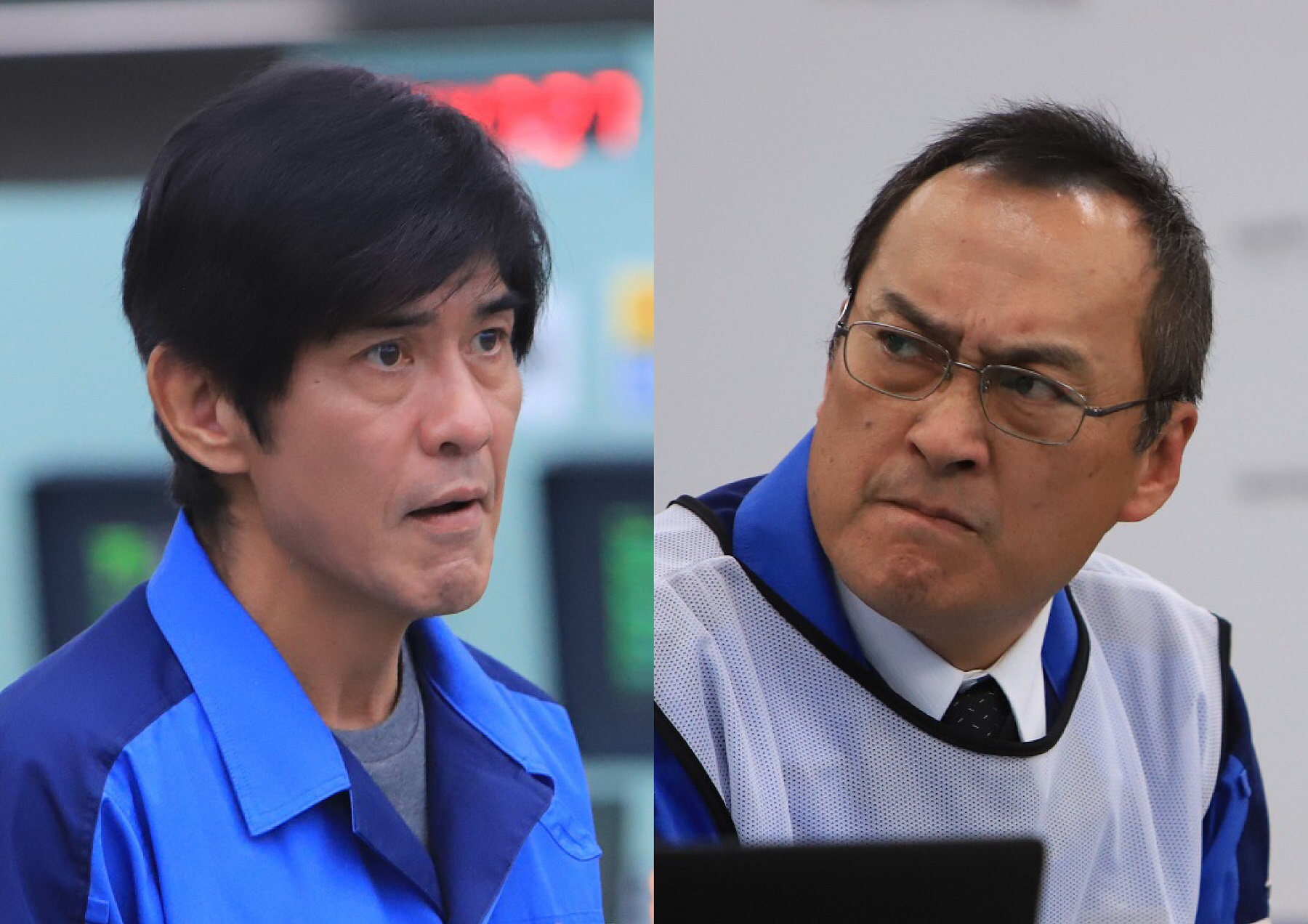Poster Released For Fukushima 50 Film About the Fukushima Daiichi Nuclear Disaster
10.April.2019 | MOVIE
Fukushima 50 is an upcoming film based on the non-fiction book On the Brink: The Inside Story of Fukushima Daiichi by Japanese journalist Ryūshō Kadota. It will be released sometime in 2020.

The film will discuss the Fukushima Daiichi nuclear disaster that occurred after the 9.0 magnitude Great East Japan Earthquake on March 11, 2011 which stands as the largest ever earthquake recorded in Japanese history.
The film’s title refers to the pseudonym given by the media to the 50 employees that remained on the site after the nuclear power plant disaster. It will show the reality that the group faced that only they knew from being inside the plant and in the face of death.
It will star Kōichi Satō who won the Japan Academy Prize for Best Male Lead for his performance in 64: Part I (2016). He will play the part of a hot-blooded Fukushima-born resident who leads the people at the site. He will be joined by Ken Watanabe who won the Japan Academy Prize for Best Male Lead for his performance in The Unbroken. He will play the part of the Fukushima Daiichi nuclear power plant chief.
The film is being directed by Setsurō Wakamatsu (The Unbroken) and written by Yōichi Maekawa. Its score will be composed by Taro Iwashiro (Japan Sinks, Red Cliff).

The newly-released poster feature the powerful words “Swear By The Sky.” Underneath the dazzling sunlight is a picture of the Fukushima Daiichi plant before the disaster. Released alongside this poster is another photo this time with a comparatively darker tone with a gloomy sky and big lettering that simply says, “What were you doing on that day, during that time?” These powerful images are sure to stir the memories of people up and down Japan.
©2020 “Fukushima 50” Production Committee
Information
Fukushima 50
Release Date: 2020
Kadokawa Pictures Website: https://www.kadokawa-pictures.jp/official/fukushima/
RELATED ENTRIES
-
‘Fukushima 50’ International Trailer Released Showcasing Reality of the Earthquake, Tsunami and Nuclear Disaster
19.February.2020 | MOVIE
Fukushima 50 is an upcoming film based on the non-fiction book On the Brink: The Inside Story of Fukushima Daiichi by Japanese journalist Ryūshō Kadota. It will be released on March 6, 2020.

The film will discuss the Fukushima Daiichi nuclear disaster that occurred after the 9.0 magnitude Great East Japan Earthquake on March 11, 2011 which stands as the largest ever earthquake recorded in Japanese history.
The film’s title refers to the pseudonym given by the media to the 50 employees that remained on the site after the nuclear power plant disaster. It will show the reality that the group faced that only they knew from being inside the plant and in the face of death.
It was revealed last month that Fukushima 50 is set to premiere in 73 countries worldwide. Today, an official international trailer was released, which you can watch below.
The trailer begins from the moment the earthquake hit Japan back on that grave day of March 11, 2011, and showcases all that followed: the band of 50 faceless workers who risked everything to save their families, hometown, and country. The international trailer is different from the Japanese trailer, which focused more on the human aspect. This trailer also does that, but emphasises the tension and risk involved. Though this is a Japanese film, it has that Hollywood feel to it with its realistic setーincluding the official featuring of the United States Armed Forcesーas well as its use of VFX.

International publishers have called the film impacting and important, and have drawn comparisons to HBO’s Chernobyl (2019). Learn the truth about the Fukushima Daiichi nuclear disaster when it releases worldwide on March 6, 2020.
Information
Fukushima 50
Release Date: March 6, 2020
Based On: On the Brink: The Inside Story of Fukushima Daiichi by Ryūshō Kadota
Production: KADOKAWA
Distribution: Shochiku Company Limited, KADOKAWA
Official Website: fukushima50.jp
Kadokawa Pictures Website: https://www.kadokawa-pictures.jp/official/fukushima/
-
‘Fukushima 50’ Film About Nuclear Disaster to be Released in 73 Countries Worldwide
27.January.2020 | MOVIE
Fukushima 50 is an upcoming film based on the non-fiction book On the Brink: The Inside Story of Fukushima Daiichi by Japanese journalist Ryūshō Kadota. It will be released on March 6, 2020.
The film will discuss the Fukushima Daiichi nuclear disaster that occurred after the 9.0 magnitude Great East Japan Earthquake on March 11, 2011 which stands as the largest ever earthquake recorded in Japanese history.
The film’s title refers to the pseudonym given by the media to the 50 employees that remained on the site after the nuclear power plant disaster. It will show the reality that the group faced that only they knew from being inside the plant and in the face of death.
Members from the film’s cast including Kōichi Satō, Ken Watanabe, Naoto Ogata, Mitsuru Hirata, Masato Hagiwara, Shiro Sano, Narumi Yasuda, as well as the director Setsurō Wakamatsu, all attended the film’s world premiere held at Tokyo International Forum on Sunday (January 26).

During the talk session at the world premiere, Sato was asked about his current mental state in relation to the film finally being released, to which his response began with mentioning the film having been premiered at Koriyama Theatre in Fukushimaーthe prefecture in Japan where the nuclear disaster struckーas part of a campaign where he and Watanabe visited numerous locations across Fukushima.
He said: “We premiered this film in Fukushima the other day as part of a campaign. I knew we had to begin in Fukushima, and having this film seen by the people of Fukushima was a terrifying thing. Before the scene with the tsunami was shown, we had to show a trigger warning that said, ‘Visual imagery of a tsunami is about to be shown.’ If we hadn’t done that, we wouldn’t have been able to show it to the people. They had to watch very distressing scenes in a dark movie theatre, so it was scary to have them see it, like victims of the disaster, people who have friends and family who were victims, the people of Fukushima and that of Miyagi, so it was important we overcame that. When I watched this film to the end, I knew it would be one that would go down on record and remain in peoples’ memory. Fukushima was the first place I took that full knowledge to. And today, the people of Tokyo will see it, and after that I’ll take those thoughts around the rest of the country.”


Next to speak was Watanabe, who also spoke about the campaign. “I interviewed someone who had been a high school student in Koriyama at the time of the disaster and had gone on to become a TV announcer. The words he said to me gave me confidence to be able to put this film out there. He said, ‘At first, my body wouldn’t stop trembling, and even though I knew I had to pull through to the end, my heart felt like it was going to break partway through. [At the time,] there was no electric, and I couldn’t get to a phone or computer. There was a lot of different news flying around [about what happened,] but seeing this film has given me the chance to see what it was really happened. And I thank you for that.”
The film’s director Wakamatsu followed up on Sato and Watanabe being involved in the campaign, saying: “The two of you were there for the people of Fukushima. You gave your time to talk to them, which made some people cry before the film started. When they had finished watching the film, it made me happy hearing them say, ‘Thank you for making a film like this.'”
Sato was also questioned on the atmosphere on set during the rigorous film shoot. “The movie is filmed in chronological order of how events unfolded, so me and the other members in the main control room had a lot of thoughts while on site. As each scene came together, I became very aware of how it felt like we were all in the same situation. I felt like we were one, in a different way to any other film.”

Shiro Sano, who plays the role of the Prime Minister at the time of the disaster, said: “People often say to me, ‘So you’ve accepted this role this time.’ I wonder why they say things like that. <laughs> I have all the information now so I can talk about what happened during that time, but at the time I didn’t understand any of the information, or how I should judge the situation. If the Prime Minister at the time had stayed motionless in Tokyo without acting, he would have been criticised. But honestly, if we don’t look at the actual site, we can’t make judgements.”
After each cast and staff member gave their comments, the MC announced that Fukushima 50 is set to be released in 73 countries worldwide.

At the end of the panel, Watanabe said: “If you’re wondering why the title of the film is written in English, it’s so after we have delivered this film from Koriyama in Fukushima to Tokyo, and then the rest of the country, it’s heading out there around the world. I have no doubts that those who watch this film will feel some kind of wonderful power.”
Sato also gave a closing statement: “Disasters are things that leave deep scars and after-effects. Our small contribution to that negative legacy should serve as a baton to pass it on to tomorrow, and into the future. I ask all of you to pray for that negative legacy to be changed into a legacy for tomorrow.”
©2020 “Fukushima 50” Production Committee
Information
Fukushima 50
Release Date: March 6, 2020
Based On: On the Brink: The Inside Story of Fukushima Daiichi by Ryūshō Kadota
Production: KADOKAWA
Distribution: Shochiku Company Limited, KADOKAWA
Official Website: fukushima50.jp
Kadokawa Pictures Website: https://www.kadokawa-pictures.jp/official/fukushima/
-
Fukushima 50 Cast and Director Premiere Film About the Nuclear Disaster to Fukushima Locals
26.January.2020 | MOVIE
Fukushima 50 is an upcoming film based on the non-fiction book On the Brink: The Inside Story of Fukushima Daiichi by Japanese journalist Ryūshō Kadota. It will be released on March 6, 2020.
The film will discuss the Fukushima Daiichi nuclear disaster that occurred after the 9.0 magnitude Great East Japan Earthquake on March 11, 2011 which stands as the largest ever earthquake recorded in Japanese history.
The film’s title refers to the pseudonym given by the media to the 50 employees that remained on the site after the nuclear power plant disaster. It will show the reality that the group faced that only they knew from being inside the plant and in the face of death.

Japanese actors Kōichi Satō and Ken Watanabe, who star in the upcoming film, held a campaign where they visited various locations across Fukushima Prefecture. Satō, as well as the film’s director Setsurō Wakamatsu and executive producer at KADOKAWA Shinichiro Inoue, made a courtesy call to Tomioka, a town which is still difficult for residents to return to. Tomioka is in fact one of the settings featured in Fukushima 50, and so before the films releases in March 2020ー10 years since the disaster struckーthe cast and staff went to pay their respects to the locals still living there.
The film premiered at Koriyama Theatre in Fukushima where Kōichi Satō, Ken Watanabe, and director Setsurō Wakamatsu all made an appearance. The event began with cast and staff announcing that they first wanted the people of Fukushima to watch the film before they made their comments. This was the first time the film had been shown to the general public, less than two months from its official release.

Satō, Wakamatsu, and Inoue’s appearance in Tomioka took place on January 22. Executive producer Inoue was the first to greet the people. “We have come to Tomioka today to officially announce to you the completion of the film Fukushima 50. We hope everybody, including the mayor, will see it as soon as soon as possible.” The director Wakamatsu followed, saying: “We are gratefully indebted to the people of Tomioka for letting us interview you before the film shoot. We wish for you all to see it and for it to be a film you believe the rest of the world should see.”
Satō said: “I believe there will be many people who look back on [the incident] and remember it like it was yesterday rather than something that happened a long time ago. I think there will be people who do not wish to remember as well. However, the film needed to be powerful in order for the memories of the incident to not fade away. The film may bring back pain, but I ask you to view the film as necessary so we can pass down the reality of what happened to future generations.”
Director Wakamatsu commented on Yonomori, a park in Tomioka and one of the filming locations which people are currently prohibited from entering due to the high radiation levels. “We filmed a crucial ‘cherry blossom scene’ there. Cherry blossoms are a thing of beauty, but it was really complicated when I thought about how these cherry blossoms cannot be seen by anyone.” Satō weighed in on this point. Speaking about his character Toshio Izaki, he said: “I don’t know to what extent his complex feelings are conveyed regarding his mental state when observing the cherry blossoms, but I hope that the beauty and transience of the cherry blossoms ties itself to the thought of never wanting this incident to happen again with those to watch the film.”
The Tomioka town mayor Miyamoto commenting on the team having filmed in Tomioka. “As living witnesses, for us to be able to pass this film down to future generations, I greatly felt that I wished for them to shoot the film, rather than permitting them to do it. I don’t believe Tomioka has been used as a film location or such before, so I want to go ahead with doing PR, both myself and as a town, so that everybody can see it.”

The courtesy call at Koriyama Theatre in Fukushima’s city of Koriyama took place the following day on January 23. Satō said before the audience: “I’m overwhelmed that we’ve finally come to this moment. By no means is this a film I could ask you to enjoy. I think there are some scenes in there that are very painful to watch, but I ask kindly that you see it through to the end.”

Watanabe spoke with strong words, saying: “There are many people whose lives were unfortunately changed by this incidentーpeople who cannot return to Fukushima. When we began filming, me and the rest of the cast and staff said that we would be unable to shoulder the extent of what actually happened, but we should dive head first into the movie, and understand even a little of what those people went through. From there we went and finished the film, and now we’re going around promoting it, starting with this city, and for that I am proud. This film absolutely enables one to feel connected to the future in some way.”
Director Wakamatsu followed up this comment. “We started this film project five years ago, and at last it’s finished. I am proud that we are able to say that as well as promote the film here in Fukushima. We set out to make this film faithfully and with sincerity.”

At the end of the talk, everybody gave their final comments. Satō said: “Let’s change this negative legacy into a different kind of legacy, even if just a little.” Watanabe said: “In my heart, I feel I hadn’t actively supported Fukushima until now. But, I believe I have been able to deliver that now to all of the people of Fukushima, doing what I’m best at. I hope it’s something you can get behind.”
After their closing statements, the cast and director were given a huge round of applause by the people of Fukushima.
©2020 “Fukushima 50” Production Committee
Information
Fukushima 50
Release Date: March 6, 2020
Based On: On the Brink: The Inside Story of Fukushima Daiichi by Ryūshō Kadota
Production: KADOKAWA
Distribution: Shochiku Company Limited, KADOKAWA
Official Website: fukushima50.jp
Kadokawa Pictures Website: https://www.kadokawa-pictures.jp/official/fukushima/
-
United States Armed Forces Stars in the Upcoming Japanese Film ‘Fukushima 50’
19.November.2019 | MOVIE
Fukushima 50 is an upcoming film based on the non-fiction book On the Brink: The Inside Story of Fukushima Daiichi by Japanese journalist Ryūshō Kadota. It will be released sometime in 2020.
The film will discuss the Fukushima Daiichi nuclear disaster that occurred after the 9.0 magnitude Great East Japan Earthquake on March 11, 2011 which stands as the largest ever earthquake recorded in Japanese history.
The film’s title refers to the pseudonym given by the media to the 50 employees that remained on the site after the nuclear power plant disaster. It will show the reality that the group faced that only they knew from being inside the plant and in the face of death.

It was revealed today that the United States Armed Forces (USAF) is involved with the shooting of the film, making it their first ever time being featured in a Japanese film. When the incident took place back in 2011, the USAF launched “Operation Tomodachi” to provide disaster relief to Japan. On January 28 this year, the first ever movie shoot took place at Yokota Air Base, a joint air base between the USAF and Japan Air Self-Defense Force (JASDF), for Fukushima 50.

Various locations across the air base were used to film scenes, such as a war council room, and a real UH-1 helicopter was flown for a scene in which the USAF heads towards Tohoku to lend support. Permission was required from the United States Department of Defense (the Pentagon) for the shoot, but because there has been no such negotiations in the Japanese film industry before, it was initially rejected. But thanks to help and cooperation from associates in the Embassy of the United States in Tokyo, who were able to demonstrate that the film would be portraying actual soldiers in the US military who were involved with Operation Tomodachi, and after long negotiations about ensuring security on the US side, permission was finally granted.

Daniel Kahl, an American TV personality in Japan, will play the part of Johnny, a military officer of the 374th Airlift Wing at Yokota Air Base. Johnny has connections to Fukushima, and viewers will get to see a more serious Daniel Kahn in action. A multitude of real US military officers will also feature as extras at the base.

To recreate the scene in which the Japanese prime minister at that time went on an emergency visit to Fukushima Daiichi aboard the Japanese Self-Defense Force helicopterーone for transporting officialsーthe Eurocopter EC225 Super Puma will be used, a helicopter that is normally used for transporting national and international people of great importance, such as those in the Japanese imperial family and the prime minister.
There is also a scene with the CH-47JA which was used for hosing down the tops of buildings. The scene will feature actual team members who were part of that operation at the time.
The production team have gone all out to make the film as faithful a realistic recreation as possible, including the set such as the Fukushima Daiichi central control room, the disaster prevention office and more. The team hope to showcase to the world what actually happened during this global disaster.
Daniel Khan expressed his gratitude to everyone involved in the film, and extended his thanks to all of the active military members who featured as extras in the film. He also spoke about how much fun he had on set, as well as it having been a valuable experience for him after people were kind enough to answer any questions he had. Since the disaster, Khan has made countless trips to Tohoku to listen to people’s stories.
The USAF also released a statement on the video shoot, stating how despite it being under difficult circumstances, the troops worked hard so that they could be involved.
© 2020 “Fukushima 50” Production Committee
Information
Fukushima 50
Release Date: March 6, 2020
Based On: On the Brink: The Inside Story of Fukushima Daiichi by Ryūshō Kadota
Production: KADOKAWA
Distribution: Shochiku Company Limited, KADOKAWA
Official Website: fukushima50.jp
Kadokawa Pictures Website: https://www.kadokawa-pictures.jp/official/fukushima/
-
On Set Photo Released For Fukushima Daiichi Nuclear Disaster Film ‘Fukushima 50’
09.July.2019 | MOVIE
Fukushima 50 is an upcoming film based on the non-fiction book On the Brink: The Inside Story of Fukushima Daiichi by Japanese journalist Ryūshō Kadota. The film will discuss the Fukushima Daiichi nuclear disaster that occurred after the 9.0 magnitude Great East Japan Earthquake on March 11, 2011 which stands as the largest ever earthquake recorded in Japanese history. It will be released sometime in 2020.
A shot taken from the film has been released and features actor Kōichi Satō, who plays the part of Toshio Izaki who was the shift supervisor at the Fukushima Daiichi and Daini Nuclear Power Plants, and Ken Watanabe, who plays the role of Masao Yoshida, the plant manager during the Fukushima Daiichi nuclear disaster. It is important to note that this film shot was released on July 9, the same date that Masao Yoshida passed away in 2013.

The images are taken from the unnerving scene right after the earthquake hit. Toshio Izaki (Left), played by Kōichi Satō, is in the central control room instructing counter-measures and looking carefully to see if anything is wrong after an emergency was instructed for the Daiichi and Daini plants. Masao Yoshida (Right), played by Ken Watanabe, is trying to come up with a plan after receiving the grave news. He is located in the quake-proof emergency headquarters which was built in Daiichi in 2010. Both photos are a chilling insight into the disaster.
It has been eight years since the earthquake struck Japan and affected its nation and which resonated with people across the globe. Fukushima 50 will deliver a drama unprecedented in the history of Japanese cinema.
©2020 “Fukushima 50” Production Committee
Information
Fukushima 50
Release Date: 2020
Kadokawa Pictures Website: https://www.kadokawa-pictures.jp/official/fukushima/
-
Fukushima 50: Producer & Actors Explain Why the Film About the Nuclear Disaster is Being Made
19.April.2019 | MOVIE
Fukushima 50 is an upcoming film based on the non-fiction book On the Brink: The Inside Story of Fukushima Daiichi by Japanese journalist Ryūshō Kadota. It will be released sometime in 2020.
The film will discuss the Fukushima Daiichi nuclear disaster that occurred after the 9.0 magnitude Great East Japan Earthquake on March 11, 2011 which stands as the largest ever earthquake recorded in Japanese history.

A press conference was held to help promote the film. The panel included Kōichi Satō and Ken Watanabe who will play the main characters and the film’s producers Shigeo Minakami and Norikazu Tsubaki of KADOKAWA.

Shigeo Minakami discussed the series of events that lead to the production of the film. He commented: “The Heisei era is drawing to a close. We began this project as a way to impart the disaster to a new era, a disaster unprecedented, even globally. The workers who fought inside the power plant at the time were dubbed the Fukushima 50 overseas. Most of them were locals of Fukushima. They were ordinary people like us. They felt many different emotions as they worked. Worry, anger, sadness. It seems what was constantly on their mind was their families having taken shelter. We decided to show this incident for what it really was, something which cannot be understood merely from news reports, by focusing on the stories of these people. Other important themes it covers are the threat to the natural environment and the conceit of humans.”
He continues: “This film is based on On the Brink: The Inside Story of Fukushima Daiichi by Ryūshō Kadota and portrays the subject very realistically. It’s been eight years since the Great East Japan Earthquake, but the disaster it caused and the memories it left still leave concern to this day. The film covers a lot of topics such as the reconstruction of areas struck by the disaster and the decommissioning of the Fukushima Daiichi Nuclear Power Plant. We are making efforts in the production of this film to face the earthquake disaster and the nuclear incident once more. KADOKAWA has a history of creating films themed on societal issues such as Jubaku: Spellbound [1999] and The Unbroken [2009], so I want this film to be another to leave for the future.”

Q: This film is set to screen in 2020. It will be a turning point year as it marks 10 years since the Great East Japan Earthquake and is also the year the Tokyo Olympics will be held. What message do you hope this film gets out there to society?
Satō: “It’s already been 8 years? It’s only been 8 years? I believe each Japanese individual feels differently on the matter. There are probably people who are unable to look back and think about the time the earthquake struck, children in their teens who were born but have no recollection of it from their childhood. There are many different people and there is no right or wrong. I hope that by showing them this film the younger generation will be able to feel and take something from it. I also want each person living in the future to take from it what should be regarded as necessary and important.”

Watanabe: “I can say this without worrying about being misunderstood, but since I starred in Letters from Iwo Jima [2006], but I have felt that the will of the people in this country always trying to figure out how to logically pass down something to the next generation hasn’t been very good. I dare say that I don’t feel that will happen with how this film covers the nuclear disaster. The film doesn’t question whether nuclear power plants are good or not. I want it to pass down logically that this is an incident that happened, for it to be something that says to our children’s generation, and our grandchildren’s generation, that it happened. I want it to accurately send out the reality.”

Watanabe continues: “The Unbroken too was a film that dealt with extremely big societal themes. When it was released, I felt that without the cooperation from the people around us it would have been difficult to get through to people in society. I was immensely grateful during that time when the media commended the film. I hope this film becomes like that too. I hope that everyone will lend their strength in getting this film and event out there to lots of people.”
Satō followed up by saying: “This is the first conference I have been to with so few smiles. We feel the same way, and I believe this strange tension in the air from you all is needed in this case. I want to convey the feelings felt as this conference to lots of people.”

Eight years have passed since the terrible disaster that affected everyone in Japan and shook the world. Be sure to see Fukushima 50 as it gives a realistic insight into that time and delivers a drama unprecedented in the history of Japanese cinema.
© 2020 “Fukushima 50” Production Committee
Information
Fukushima 50
Release Date: 2020
Kadokawa Official Website: https://www.kadokawa-pictures.jp/official/fukushima/









